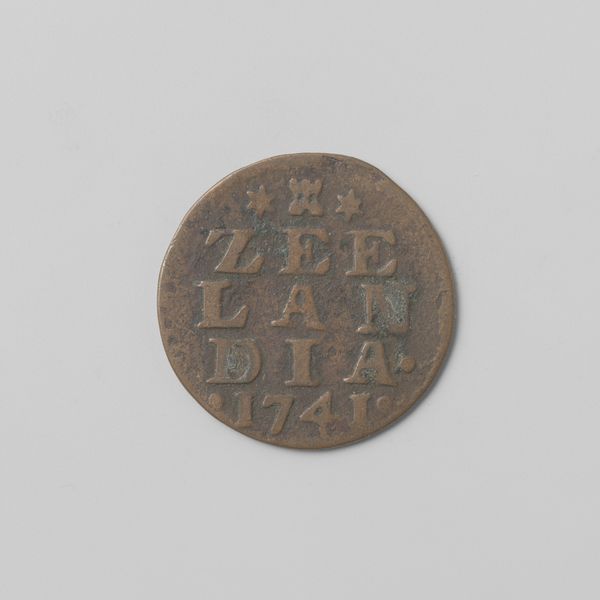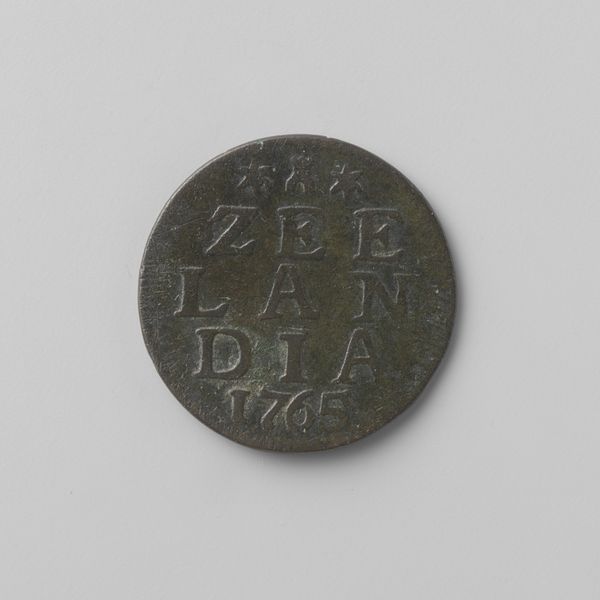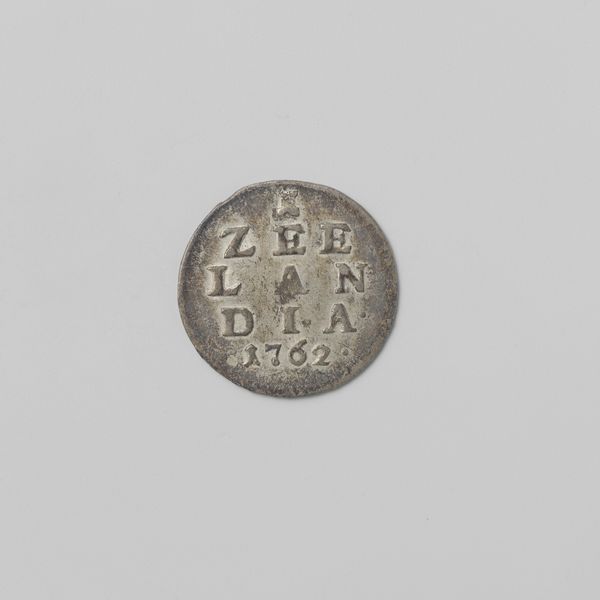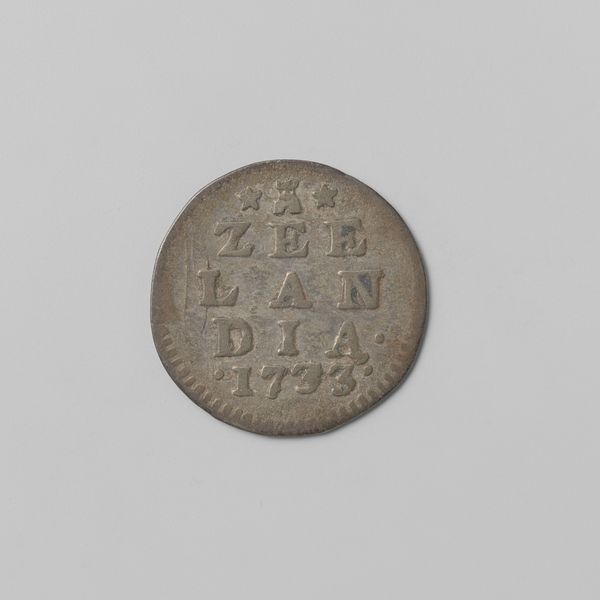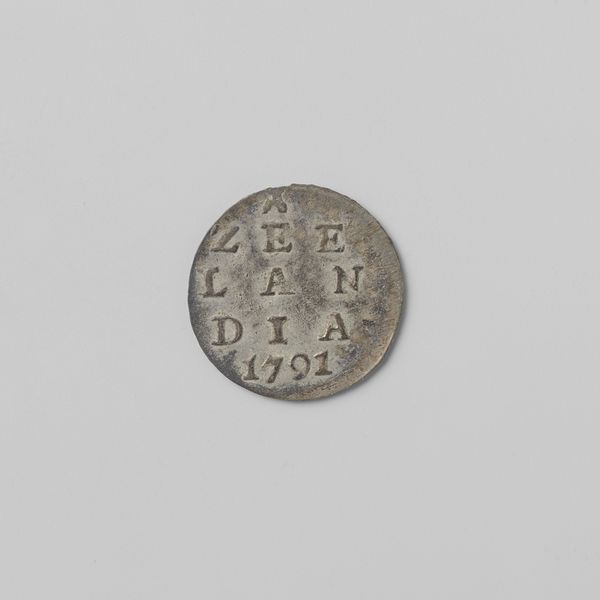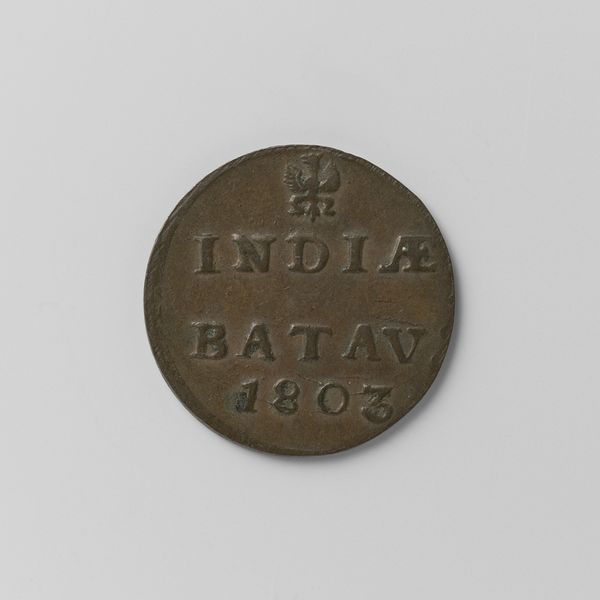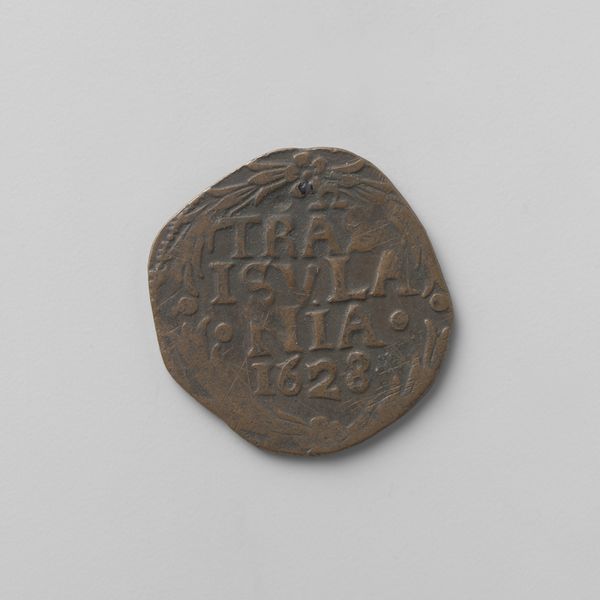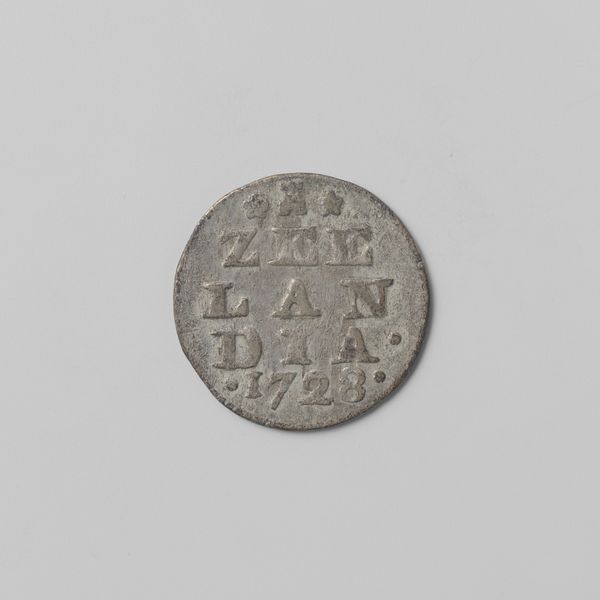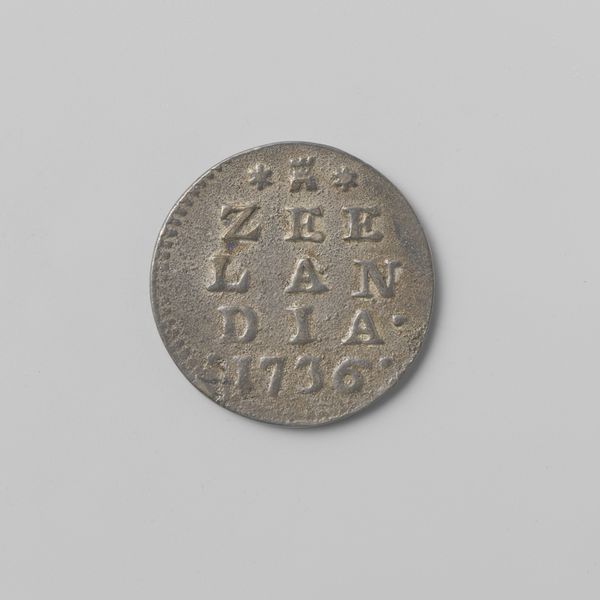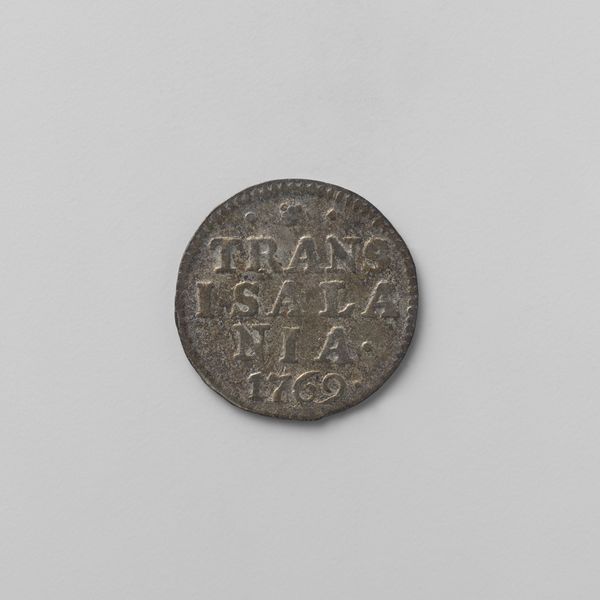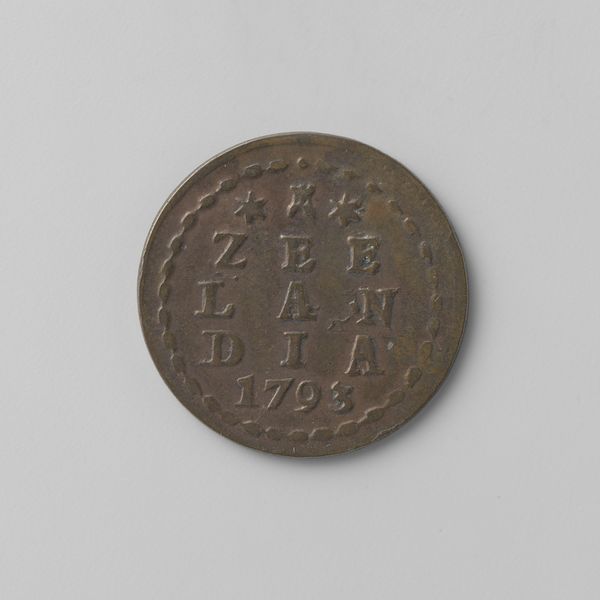
metal, bronze
#
metal
#
bronze
#
geometric
#
ancient-mediterranean
Dimensions: diameter 2.1 cm, weight 2.47 gr
Copyright: Rijks Museum: Open Domain
Editor: So, this is a bronze coin from 1752, titled "Zeeuwse duit". It's a seemingly simple, small object, but the wear and the imprint of "Zeelandia" make me wonder about its place in the lives of everyday people back then. What do you see in this piece? Curator: I see a material artifact deeply embedded in the social fabric of 18th-century Zeeland. It is more than just currency; it’s a symbol of provincial identity and economic exchange. The fact that it's bronze speaks to its relative value, and how widely circulated it would have been within the community. Think about who held it, where it travelled, and the transactions it facilitated. It wasn't about high art or display, but it shows about the day-to-day commerce and lives of people within the socio-political realm. Editor: That's fascinating! So, a coin, even this small one, had a role in expressing regional identity? How did the province use objects like this? Curator: Absolutely. Currency issued by local entities reinforces that entity's economic and political autonomy. These coins became tools to project authority but to reach audiences and users much broader than any formal proclamations ever would. Moreover, the controlled imagery reinforced a kind of mental architecture. It would remind those circulating and receiving the coin about Zeelandia's existence and purpose, thus impacting perceptions and behaviors. Do you think modern currencies play this role in the same way? Editor: That makes me see currency in a whole new light! Maybe the symbolism isn't as overt these days. It's made me think of the power inherent in seemingly mundane objects, and how they reflect the socio-political contexts in which they were produced and used. Curator: Exactly. Appreciating art like this coin provides an enriched perspective, one where even seemingly minor aspects contain layers of social function.
Comments
No comments
Be the first to comment and join the conversation on the ultimate creative platform.
